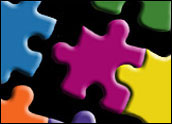
Based on the findings of the Competitive Framework and interviews with end-users, Aberdeen’s analysis of the Best-in-Class demonstrates that the success of the contact center strategy depends on a combination of specific capabilities and technology enablers.
Aberdeen’s research has identified several capabilities that Best-in-Class companies leverage in order to achieve elevated operational performance.
Knowledge Management
Looking at the knowledge management capabilities, the Best-in-Class are leveraging integration of contact center data into a central database.
A central database dedicated to contact center data allows for efficient searching and provides a configurable contact center caller detail trail.
With the use of a central database, contact center managers can look at KPIs (key performance indicators) that they are using to track performance for end-users.
Customer satisfaction, first call resolution, SLA (service level agreement) compliance, customer churn/customer retention and customer satisfaction rate are just a few examples of what contact center managers are tracking through a central database.
The Technology Factor
An organization thinking of investing in speech analytics should consider the technology solutions available to their company.
Figure 2 shows the use of technology in the contact center. The Best-in-Class have taken a commanding presence in enabling monitoring and analytics in the contact center. The technology stack of the contact center includes all types of business intelligence analytics — IVR (interactive voice response) analytics, phoneme analytics, predictive analytics, and quality monitoring.
Speech analytics in the contact center starts with constant use of business intelligence. When looking at the vast pools of data, contact center managers can understand with granular detail the information that the caller is contributing to the contact center knowledge base and can better serve their callers.
Understanding the customer data and trends that are coming into the contact center with use of these technology enablers leads to a higher customer satisfaction rate.
Performance Management
Most companies set corporate goals on a year-to-year or quarterly basis. For organizations to fully comply with their customer needs, they need to leverage customer satisfaction measurements.
In figure 3, the Best-in-Class show that they value measuring customer satisfaction against corporate goals. Goals such as enhancing customer service and optimizing lead generation and delivery help contact center managers meet customer needs. The degree to which corporate goals are met correlates directly with customer satisfaction rate improvement.
The Best-in-Class also value agent monitoring. Contact centers generally use three methods to monitor agents:
- Side-by-side, where the supervisor sits at the agent’s workstation and provides immediate assistance if needed
- Remote real-time is where the supervisor listens in on calls from a remote workstation
- Call recording, where a supervisor or service quality agent reviews recorded interactions
Providing a contact center agent with scheduled feedback can better the agent, so the interaction with caller can be more efficient. Helping contact center agents understand where their core strengths and weaknesses can help the agent better serve the caller. Best-in-Class companies are 24 percent more likely to be leveraging performance than the Industry Average.
The Best-in-Class have also identified policies for call recordings to be enforced rigorously as a performance management capability. With the call recordings, agents learn from their prior mistakes and misunderstandings with the caller and obtain a better first call resolution rate.
With the use of speech analytics, agents can go through the recordings and understand where the caller’s frustration began. Was the agent really answering the caller’s questions or plainly just didn’t understand the question?
Just like with monitoring all agents, enforcing call recording can help the contact center agent with their day-to-day calls. With enforcing call recordings, agents can learn from their mistakes to strengthen their core capabilities.
Gaurav Patil is a research analyst in technology markets at Aberdeen. Learn how you can extract business intelligence in your contact center to better serve your customers in Aberdeen’s newest benchmark report, entitled “Unlocking Business Intelligence in the Contact Center.”















































